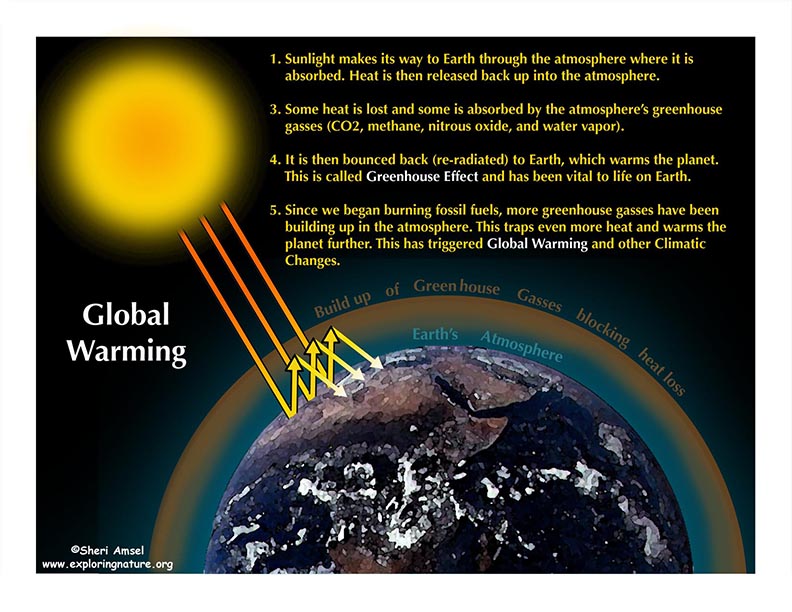

The Difference Between Greenhouse Effect and Global Warming
Sunlight (solar radiation) makes its way to Earth through the atmosphere where it is absorbed. Heat is then released back up into the atmosphere. Some heat is lost in this process and some is absorbed by the atmosphere’s greenhouse gases, which include CO2, methane, nitrous oxide, and water vapor. It is then re-radiated (bounced back) to Earth warming the planet. This is called the Greenhouse Effect and is vital to all life on Earth, as it creates a climate that is not too hot and not too cold - making Earth a Goldilocks planet, as such.
Greenhouse gases are a natural part of Earth’s atmosphere. Since we began burning fossil fuels in the last century, more greenhouse gases – especially carbon dioxide, have been building up in the atmosphere. Scientists measure the amount of carbon dioxide (and other gases) in the atmosphere by parts per million volume (ppmv). In the mid 1900s there was thought to be about 270 ppmv carbon dioxide and now it is up to 400 ppmv. This traps even more heat over the Earth’s surface, warming the planet further. This is called Global Warming.
Other sources of rising greenhouse gases include methane from raising livestock and rice cultivation, CO2 released in the manufacturing of cement (from limestone) and nitrous oxide from nitrogen fertilizers. Rising temperatures are causing many climatic changes that can adversely affect the planet’s biosphere.
When you research information you must cite the reference. Citing for websites is different from citing from books, magazines and periodicals. The style of citing shown here is from the MLA Style Citations (Modern Language Association).
When citing a WEBSITE the general format is as follows.
Author Last Name, First Name(s). "Title: Subtitle of Part of Web Page, if appropriate." Title: Subtitle: Section of Page if appropriate. Sponsoring/Publishing Agency, If Given. Additional significant descriptive information. Date of Electronic Publication or other Date, such as Last Updated. Day Month Year of access < URL >.
Amsel, Sheri. "Greenhouse Effect VS. Global Warming - Reading and Diagram (6-8 NGSS)" Exploring Nature Educational Resource ©2005-2024. December 14, 2024
< http://exploringnature.org/db/view/Greenhouse-Effect-VS-Global-Warming-Reading-and-Diagram-6-8-NGSS >
